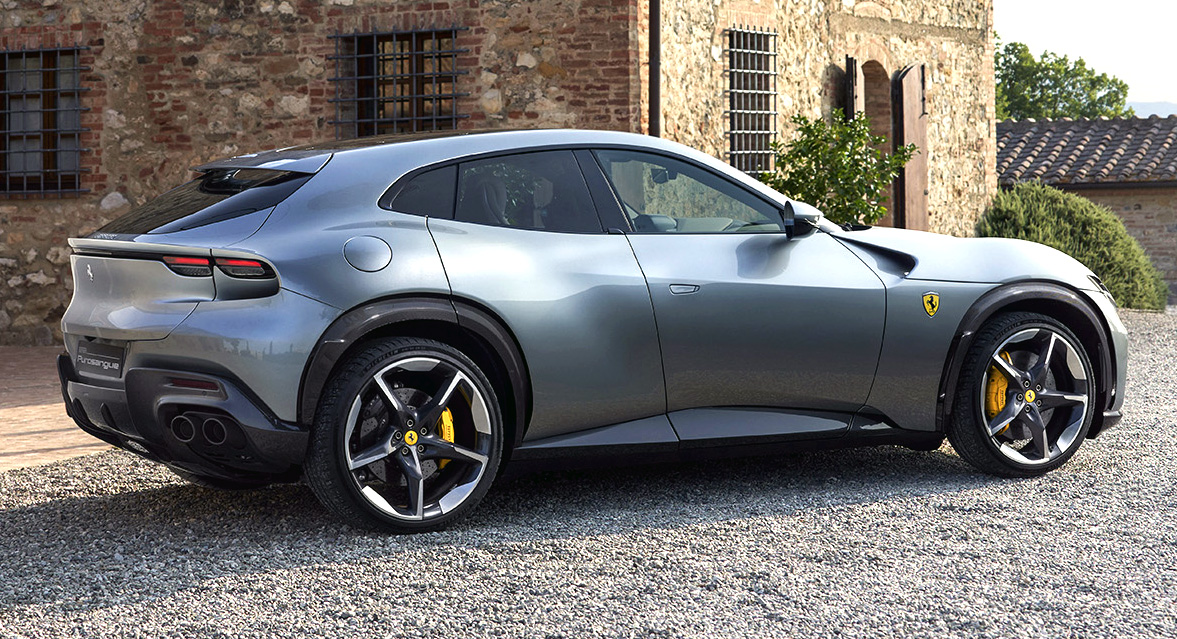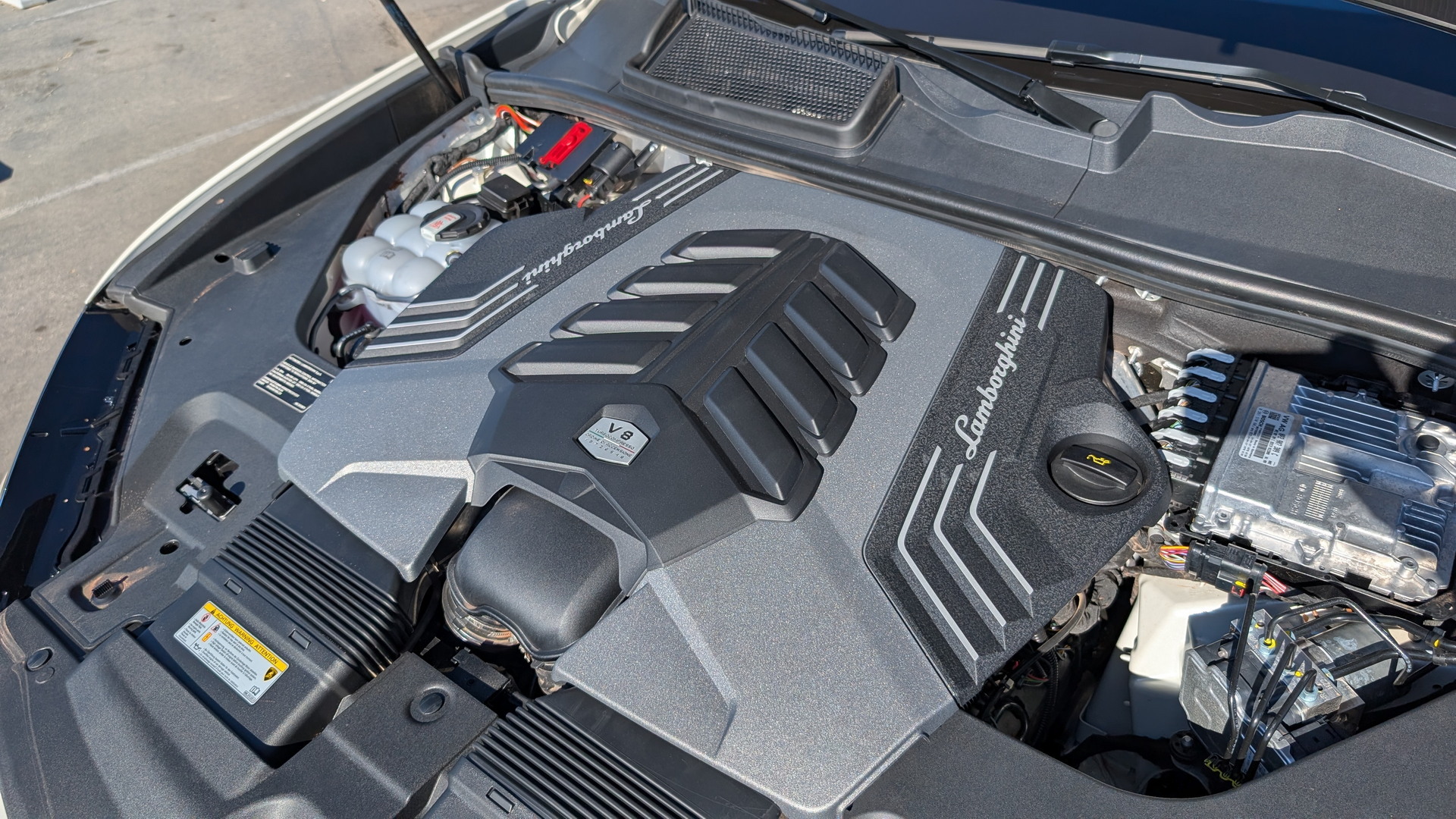Across the globe, there isn’t a single wild bull living today. Sure, there are plenty of dangerous bulls but every single one of them is domesticated to one degree or another. Despite that, Ferrucio Lamborghini respected bulls (and bullfighting) so much, that he linked his company to them – and many of its supercars, starting with the Miura, were named after famous bulls. Plus, Ferrucio was born under the zodiac sign of Taurus, so in a way it made sense.
Today, much like the animals, Italian raging bulls on wheels have changed a lot over time. The Urus is only the most obvious example of this. Lamborghini’s range is fully electrified now. It no longer makes a V12 that doesn’t employ some hybrid assistance. It will also, for the first time ever, have an EV in its range before the end of the decade.
More: Lamborghini Urus SE Is A 789 HP PHEV With A 37-Mile Range
How good could the Urus S even be, then? After all, it shares some of its underpinnings with an Audi SUV. In fact, it uses a similar twin-turbocharged V8 as the RS Q8. It’s not actually made to destroy lap records. It’s full of driver assistance technology like stability control, lane-keep assist, blind-spot mitigation, and more.
QUICK FACTS
These are the thoughts I had before a week of driving the Urus S in Los Angeles of all places. That’s right, my first opportunity to drive a Lamborghini came in one of the most densely packed places in America. The streets are flooded with cars and I’m in a Lamborghini worth north of $300,000. It turns out, there’s still some wild DNA under this Italian sheet metal.
The Beating Heart
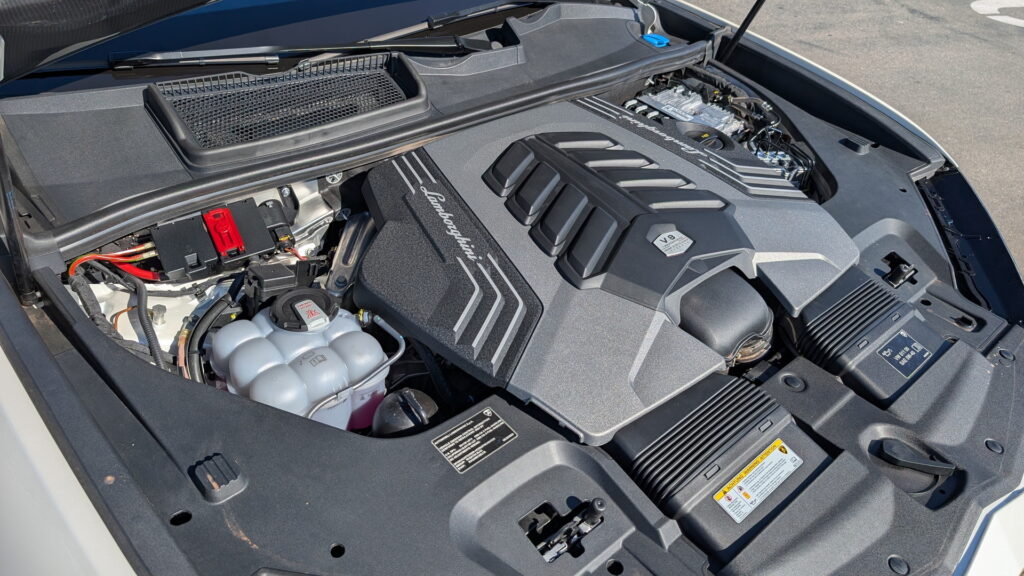
No doubt the main party trick of the Urus is its engine. The world is overrun with SUVs and crossovers these days but few have a twin-turbocharged V8. Even fewer make 657 hp (489 kW) and 627 lb-ft (849 Nm) of torque. Those figures are important as they serve as one clear sign of the delineation between this car and an Audi or Porsche that might share some components.
Lamborghini reworks the Urus engine before it leaves the factory. It gets new tuning to enable that additional power. It also uses a unique setup for the all-wheel drive system and the gearbox to give the Urus its own unique character. In addition, it provides several driving modes.
They include Strada or street for everyday driving, Sport for a bump in performance on the road, Sabbia for sand, Terra for “dominating off-road terrain,” Neve for snow and ice, and finally Corsa for driving on a race track. That last one is important, but we’ll circle back to it later.
Lamborghini says this car will get up to 14 mpg in the city and 19 on the highway, with a combined rating of 16 mpg. In our testing, it managed only a meager 8 mpg (more on this later, too). In its entire life, around 2,000 miles, it’s achieved around 14 mpg according to the on-board computer.
A Lamborghini Cabin
Photos: Stephen & Casey Rivers for Carscoops
This is actually where we get our first little touches of traditional Lamborghini. Specifically, I mean controls that are somewhat obtuse. For example, the drive-mode selector only cycles through in one direction. Did you accidentally switch from normal to Sport? Well, get ready to cycle through Corsa, Sabbia, Terra, and Neve before you’re back to Normal again.
In the midst of the center console, you’ll find a giant, and I do mean giant, handle to pull back on. It looks more like something that would engage warp drive more than anything else. Is it the parking brake? Also no. It’s the only way to put the car into reverse. That’s right, the largest, most prominent hand control in the center console puts the Urus into reverse. That’s all it does aside from cosplaying as an aircraft throttle handle.
Review: What’s It Really Like Driving Your First Ever Supercar?
Want to put the car in your own personalized custom drive settings? You’ll need to reach over to the far side of the console to select “Ego” mode. These are all things that other brands locate in more sensible places and frankly, I kinda love that Lamborghini still does quirky weird stuff like this as it absolutely harkens back to cars like the Espada, Jalpa, and Diablo.
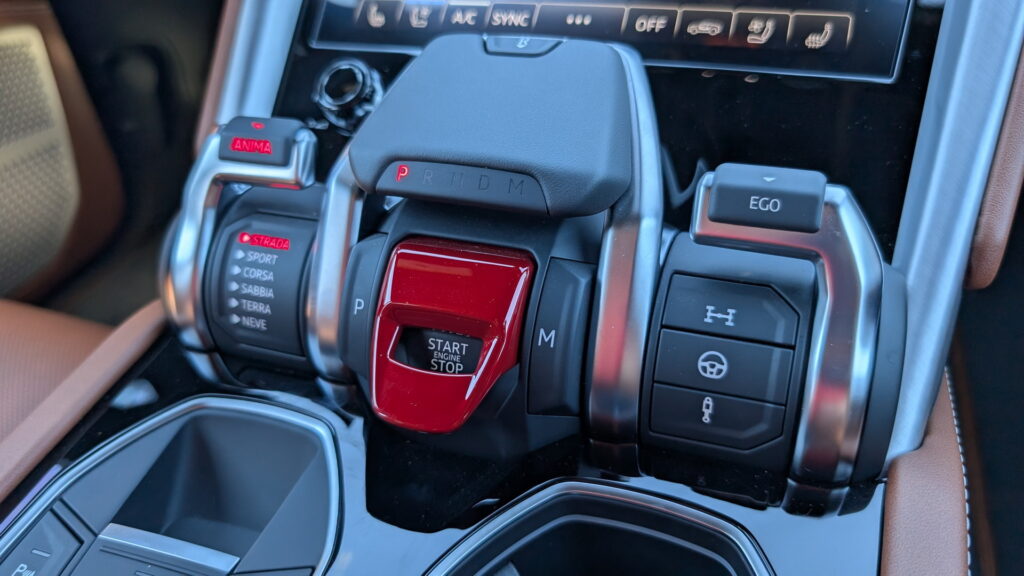
Beyond the somewhat befuddling controls, the cabin is objectively very nice. The seats are comfortable, the visibility is great, and the little touches are great. Real metal, carbon fiber, and leather litter the interior. The shift paddles are real metal too and feel great on the fingertips. You’ll get used to them too because they’re how you put the car into drive which, to me, is an outstanding choice.
The infotainment system and gauge cluster are Lamborghini’s versions of the ones you’ll find in an Audi RS Q8. To that end, they work quickly and without much hassle, though we do wish both brands would ditch the lower climate control screen in favor of genuine physical buttons. It also doesn’t help that the surround is a cheap piece of piano-black plastic. As something owners will touch every day it feels almost offensively out of place in a $300,000 car.
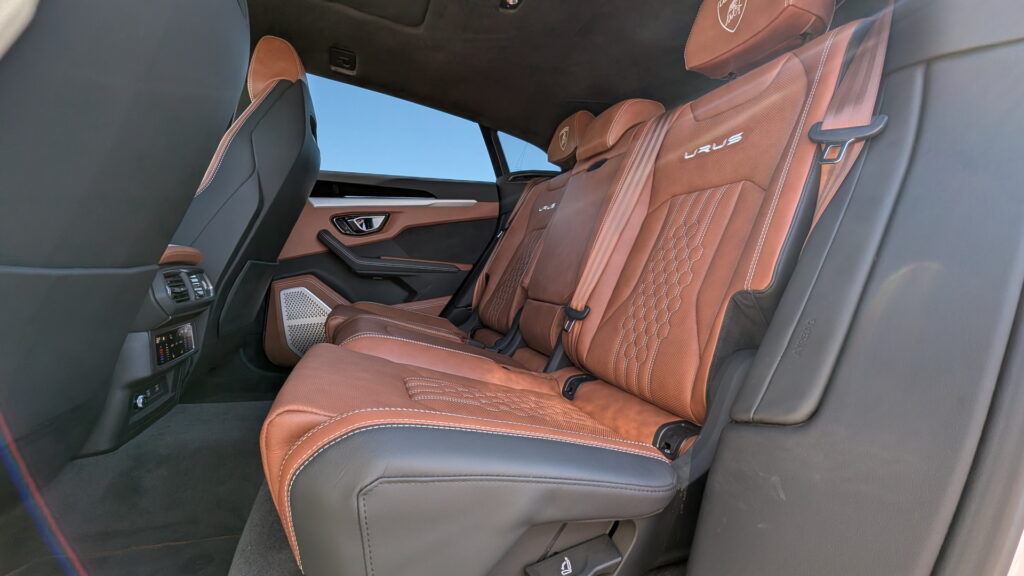
What isn’t out of place is the Bang & Olufsen sound system, which sounds great. It combines 1,700 watts and 21 speakers for a seriously high-end experience. Upon startup, two small speakers pop out from the dash to provide even more depth, and little touches like the Y-shaped speaker grilles elevate the look of the system.
Buyers can spec the Urus with three-abreast seating in the back or a pair of buckets. Our test car had the bench seats back there, and at six-foot-six, I mostly fit without issue though my head did nuzzle the roof. Rear-seat occupants get their own pair of climate control zones, too which is a great touch. Each rear seat is heated and can fold down to provide more total cargo space.
Speaking of storage, buyers get 22 cubic feet behind the second row for gear. That’s less than in a Toyota Crown Signia. Of course, Lamborghini offers a few more small storage spaces like in the center console of each row and even underneath the center console in the front.
Drive Impressions
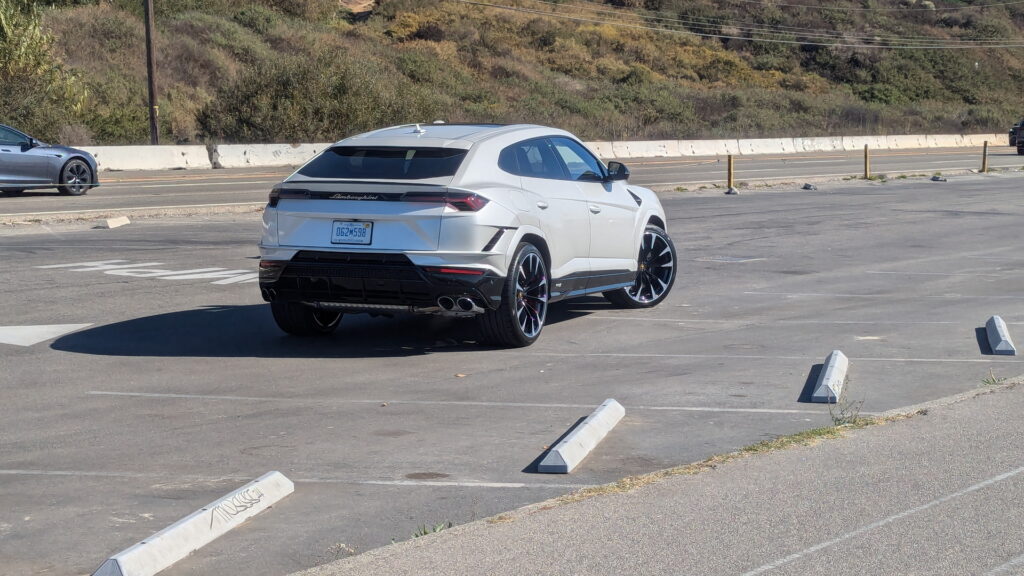
Of all the places to pilot a Lamborghini of any ilk, Los Angeles might be one of the worst. The city is cramped. There are, after all, almost four million people here. That’s more people than the entire state of Arkansas but in a single city. Suffice it to say, the time spent driving this car in town was mostly between 5 and 30 mph. It’s at these speeds though that the Urus makes a lot of sense.
Review: 2025 BMW M5 Hybrid Delivers A Heavyweight 717HP Punch
No matter how much I might personally love supercars and sports cars, driving them at super low speeds, especially in traffic, isn’t a blast. The Urus is comfortable, quiet, and gives you a massage while you trundle in traffic with 600+ horses waiting for space to run. No other Lambo provides a place where you and three (or maybe four) of your friends can experience this together.
At the same time, it doesn’t give off what my brain tells me are genuine Lamborghini vibes. The styling is great to look at, and the cabin is certainly very nice, but most of it feels a bit too domesticated.
There seems to be one big trick to getting this bull’s wild DNA to come out. Switch it into Corsa (Race) mode. That’s certainly not recommended in many situations as it turns off a bevy of the safety systems, sharpens up throttle response, tightens the steering, and burns way more fuel. This is why we managed just 8 mpg.
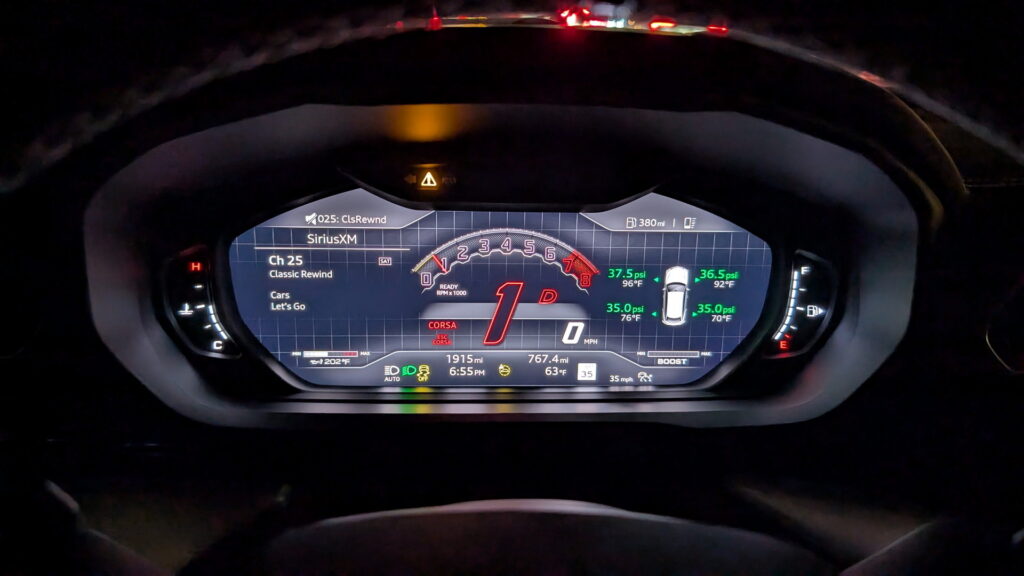
Driving the Urus in Corsa makes it feel alive, playful even, in a “you’re playing with something that could kill you” sort of way. It’s still what I imagine is a far cry from cars like the Diablo or Countach, but the Urus will never come close to delivering what those cars do. The goal here is to add in a ton of practicality without losing the spirit of the brand.
To that end, an Urus S in Corsa mode does feel appropriate. The exhaust is loud, the gear shifts are aggressive and a bit jarring, and the throttle seems to taunt you into goading it. On back roads, the Urus feels very sharp and lighter than its curb weight suggests. The body control is outstanding in harder turns.
In a straight line or coming out of bends, the Urus lunges forward like a poised Olympic athlete and, thanks to Corsa mode, supplies enough torque to the rear wheels that they slip a little. It’s a riot of a car. The speed comes on so quickly that being ready for the next tug at the paddle takes concentration in one’s first few forays into the go pedal. Do it right and you’ll go from 0-60 mph in 3.2 seconds.
While all of this is happening, the soundtrack is great, too. Having driven the twin-turbo V8 Porsche Cayenne recently, I can assure you the noise from this Lamborghini is dramatically different. It’s boisterous, edgy, and maybe even a bit offensive. At any level of throttle engagement (including zero), it sounds great and unique compared to the Porsche.
What makes this car special is how it can go from a deadly bull when pushed to the edge back into a sedate four-person grocery-getter for the vast majority of its life.
What About The Competition?
The world of hyper-fast SUVs is small but growing. Lamborghini has to battle it out with cars like the Bentley Bentayga, the Audi RSQ8, and the Porsche Cayenne. All of those are just within its own family, too. The Ferrari Purosangue has an entire echelon of this segment to itself thanks to genuine one-off design features you simply can’t get in another super SUV.
Which one a buyer picks will come down mostly to personal desire. Cars like the Bentayga or the Rolls-Royce Cullinan appeal to those who prioritize comfort over outright performance. The Aston Martin DBX and Audi RS Q8 lean back toward speed a bit more. The Porsche is the standard that kicked off this whole class.
More: Ferrari Purosangue Vs Lamborghini Urus – Can Horsepower Beat Torque?
The Ferrari is, at least on paper, miles ahead of the Urus. It’s not fair to even call them rivals as the Purosangue starts at over $400,000, comes with a naturally aspirated V12, has a very unique suspension to keep things flat in the corners, and altogether is just more special – and much more expensive. Of course, all of this leaves a spot in the market for the Urus.
Lamborghini benefits from its supercar cache and is selling perhaps the most exotic-looking super SUV of the bunch. It doesn’t hurt that it sounds great, goes like stink, and undercuts cars like the Cullinan and Purosangue on price. Would practical buyers pick it over a comparable Audi? No. Will those who want the attention a Lambo gets care about the extra $200,000ish they spend on this over an RS Q8? Provided they have the cash to burn, we guess not.
A Blood Transfusion
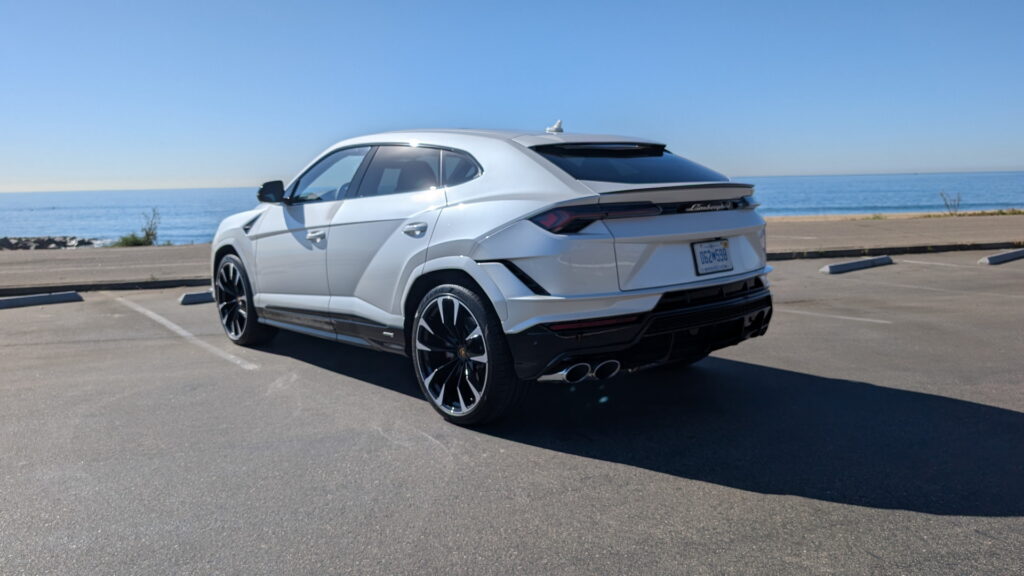
The reality of the Urus is that it’s sort of a tall hatchback more than it’s a low-slung SUV. It’s athletic, playful, and a lot of fun. Does it live up to the badge on its hood? While purists might not think so, today’s buyers beg to differ. Regardless of what I or anyone else thinks, Lamborghini says the Urus is sold out until 2026, so the target demographic is eating this bull up.
Ultimately, the only way that a brand like Lamborghini can even survive in today’s market is to build cars like this. The Urus’ success enabled the marque to continue rolling out models that appeal to enthusiasts, such as the Huracan STO, and more recently the Revuelto and Temerario.
The fact that it is a major financial lifeline to bonafide supercars like that while maintaining any Lambo DNA at all is something that shouldn’t be overlooked. The Cayenne once did it for Porsche and now, the Urus is doing the same thing for Lamborghini. I’d call that a win-win situation.





























